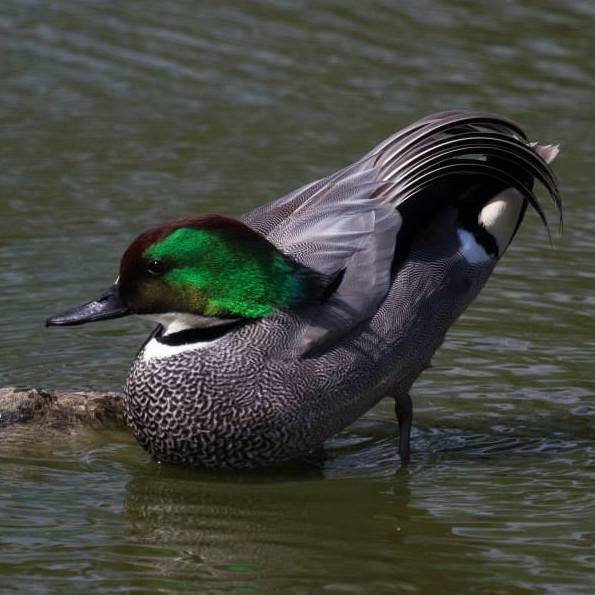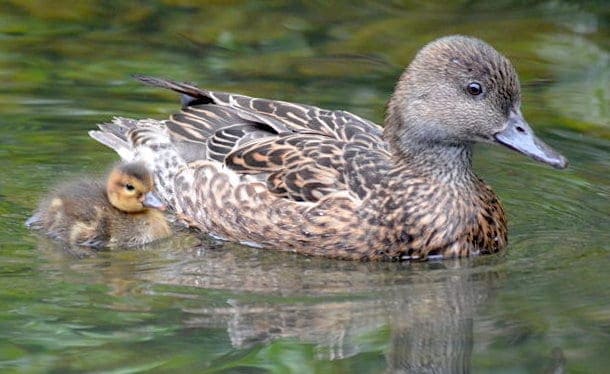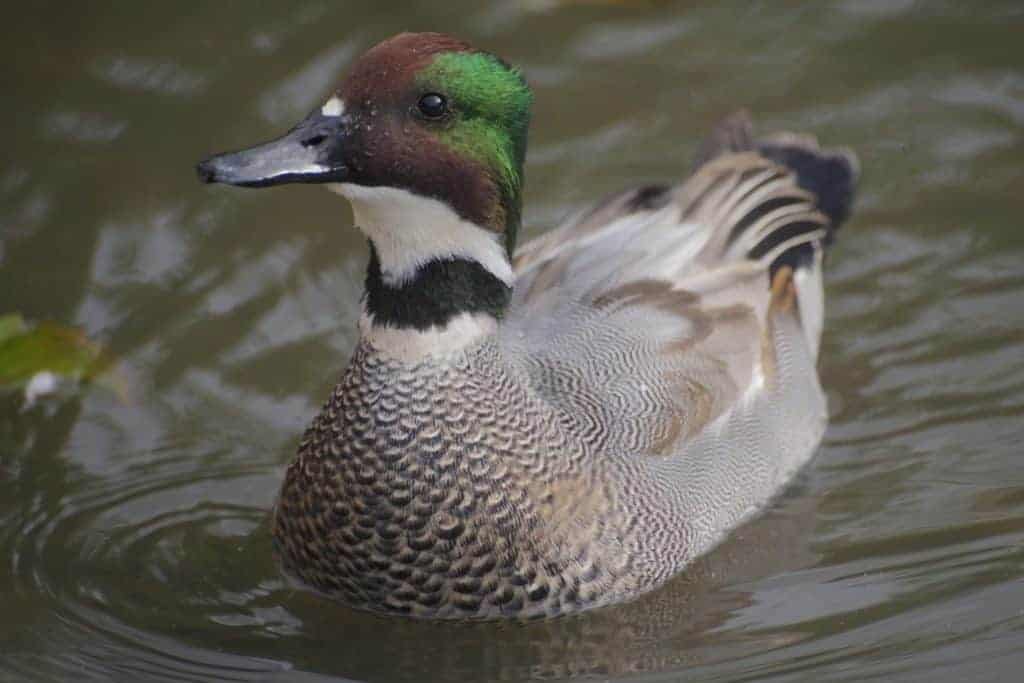Falcated Duck


Mareca falcata
With its striking plumage a drake Falcated Duck is one of the most beautiful of all the ducks. It cannot be confused with any other; the long flowing crest and elongated, sickle-shaped tertial feathers giving it a unique appearance. In contrast, the duck is plain and easily overlooked, most closely resembling a female Gadwall. Although a highly distinct species, its behaviour and habits suggest a close affinity to the Gadwall and more distantly to the wigeons.
Falcated Ducks are native to China and Japan, breeding in Eastern and Central Siberia. They are highly migratory, and vagrants have occasionally reached Europe and even Britain, though escapes from captivity cannot be ruled out.

Despite its spectacular looks, this is a generally quiet, unshowy species and is seldom aggressive. When displaying, the drake puffs out its crest but doesn’t erect it, while its head-up-tail-up display is similar to that of a Eurasian Teal. The drake’s call is a teal-like whistle, while the duck’s quack resembles that of a Gadwall.
Once one of the rarest of ducks in captivity, this species is now widely kept and readily available, and makes a beautiful addition to any collection. It is hardy and unfussy, and is not difficult to breed.
Falcated Ducks like to nest near water, in tall grass or in bushes. They are generally happy as solitary pairs or in loose groups. The duck lays 6–9 creamy or yellowish eggs and she incubates for 24–26 days. The drake hangs around for a little while but moves on once incubation is underway, leaving the duck to rear the young alone.